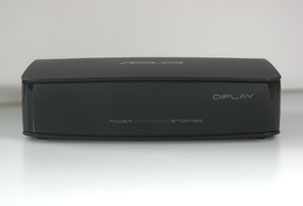Asus O!Play HDP-R1 Digital Media Player
The O!Play comes with a remote control, a pair of AA batteries for the remote, a set of composite-video/stereo-audio cables, a printed Quick Start Guide, and CD that contains a more detailed user manual. The Quick Start Guide devotes only two pages to setting up the O!Play, but for most users this will be enough to get the device up and running; setting up the O!Play is fairly easy--at least as far as using it to play files from an attached storage source, such as a hard drive or USB flash drive. More detailed setup and usage details can be found in the user manual on the CD.
|
Left: The front of the O!Play. Right: The O!Play and remote (the quarter is there for scale). | |
|
Left: The back ports of the O!Play. Right: The ports on the left side of the unit. | |
|
There are no ports on the right side of the unit. | |












